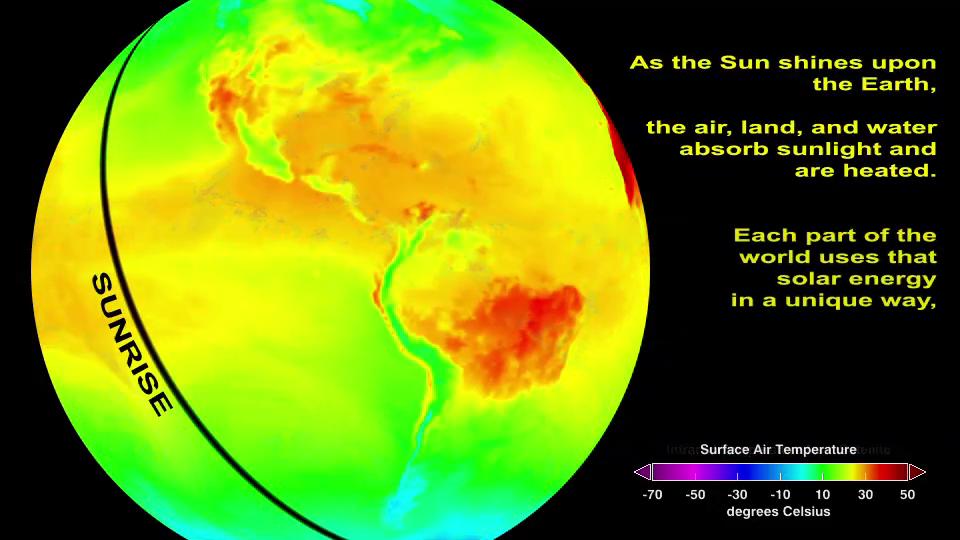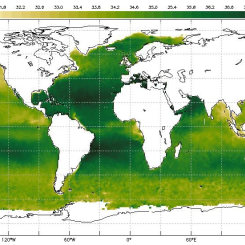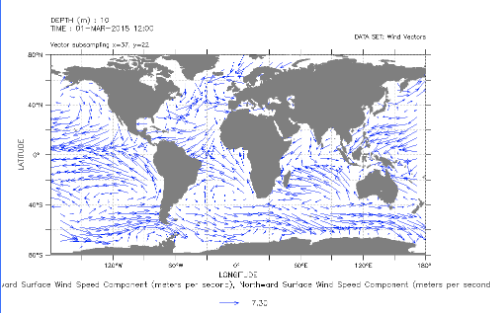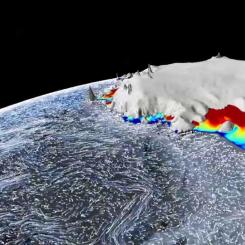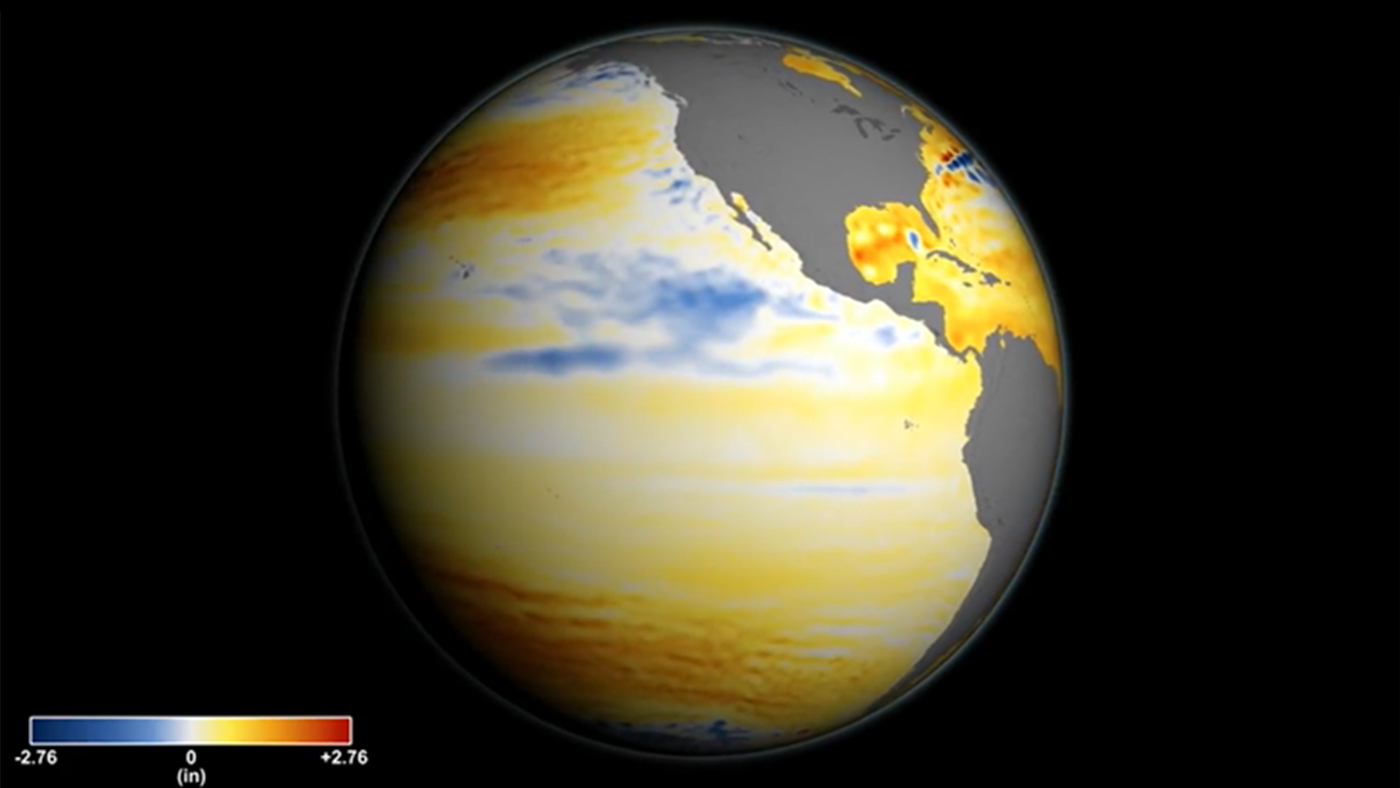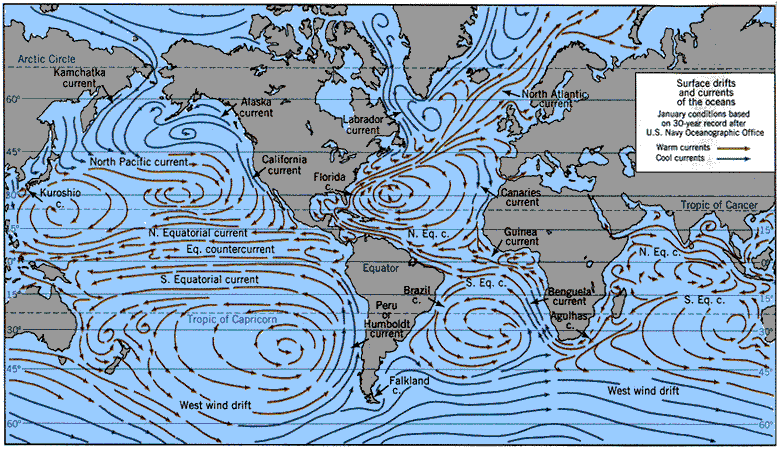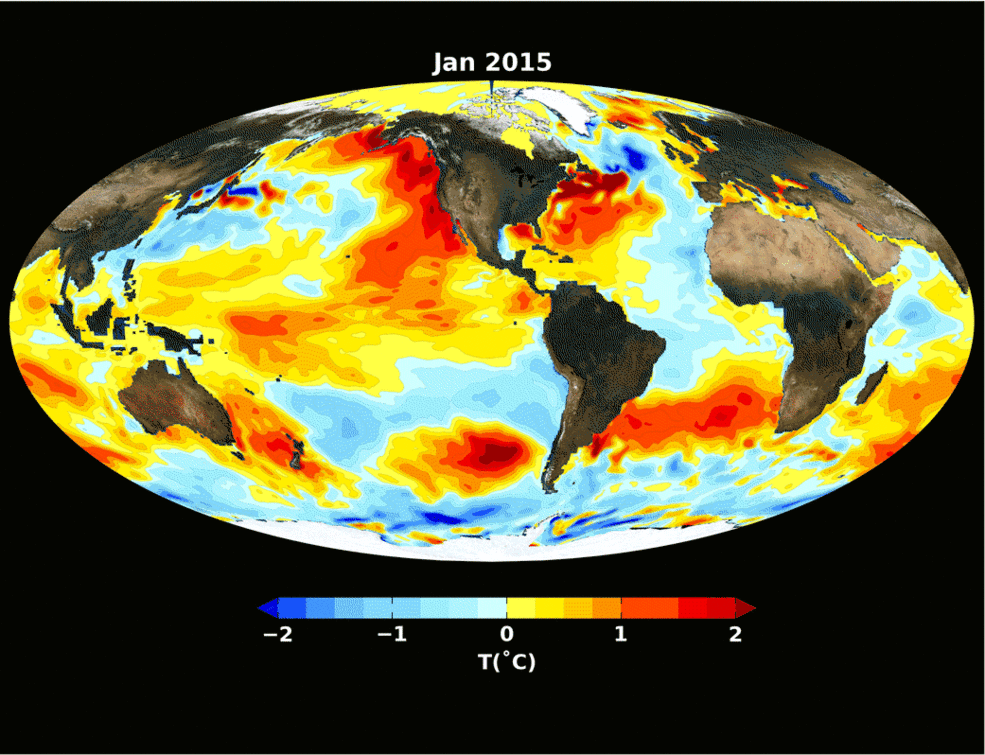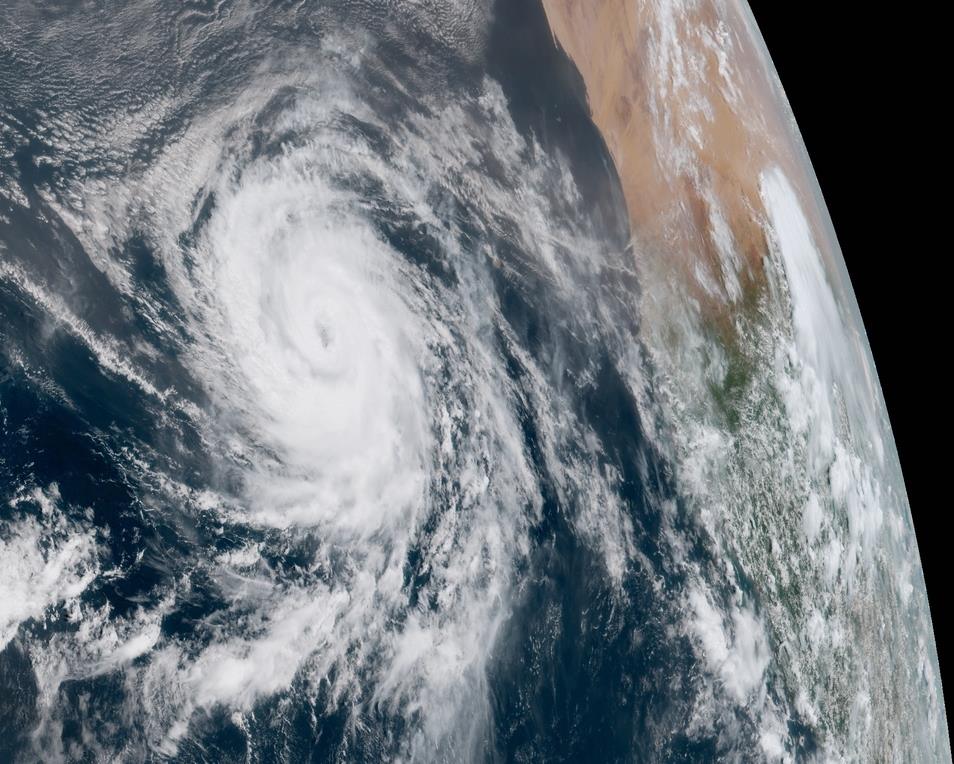About The Hydrosphere

This image represents the hydrosphere throughout the My NASA data website.
What is the Hydrosphere?
The Hydrosphere is associated with water in the liquid state, which covers about 70% of the Earth's surface. Most liquid water is found in the oceans. Our Hydrosphere gives Earth a distinct appearance as a blue marble and separates us from other planets in the solar system. Only a small portion of the Earth's water is freshwater, found in rivers, lakes, and groundwater. Water in a gas state (water vapor) is probably best considered as a feature of the Atmosphere. Additionally, frozen water in the forms of snow, sea ice, icebergs, ice sheets, and glaciers are identified as part of a separate sphere of the Earth System, the Cryosphere.
Water is necessary for sustaining life on Earth and helps connect the Earth's systems. Precipitation, evaporation, freezing and melting and condensation are all part of the hydrological cycle (AKA water cycle)- a never-ending global process of water circulation from clouds to land, to the ocean, and back to the clouds. This cycling of water is intimately linked with energy exchanges among the Atmosphere, Cryosphere, Hydrosphere, and Geosphere. These connections help define the Earth's climate and cause much of natural climate variability. Knowing details about where precipitation occurs, how much, and its characteristics allows scientists to better understand the impact of precipitation on streams, rivers, surface runoff and groundwater. Scientists rely on frequent and detailed measurements to develop models to determine changes and make predictions about future changes in Earth’s water cycle.
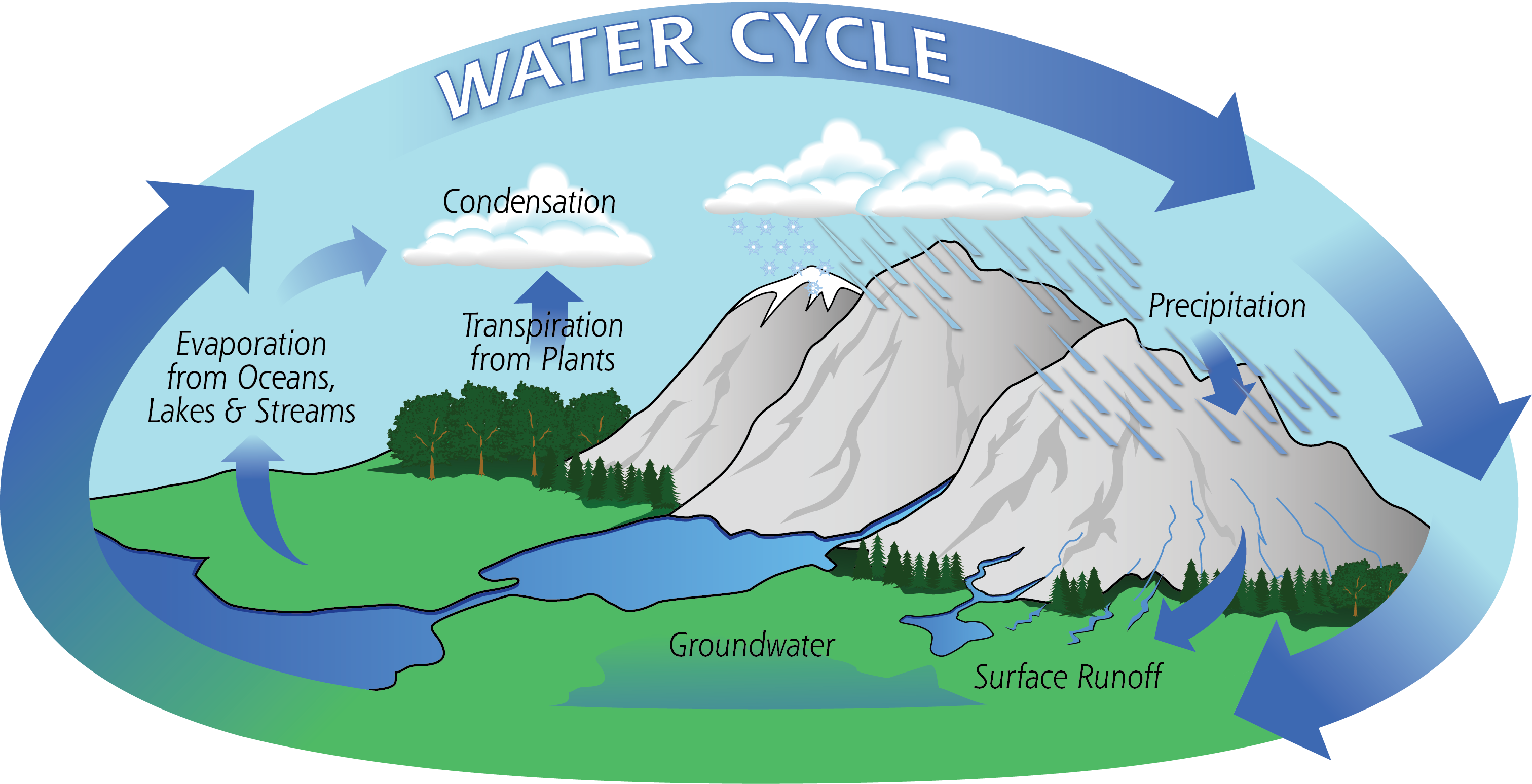
Diagram of the water cycle Credit: NASA GPM
The Earth System interacts with the Hydrosphere in the following ways:

Disciplinary Core Ideas:
Crosscutting Concepts:
- Systems and System Models
- Structure and Function

